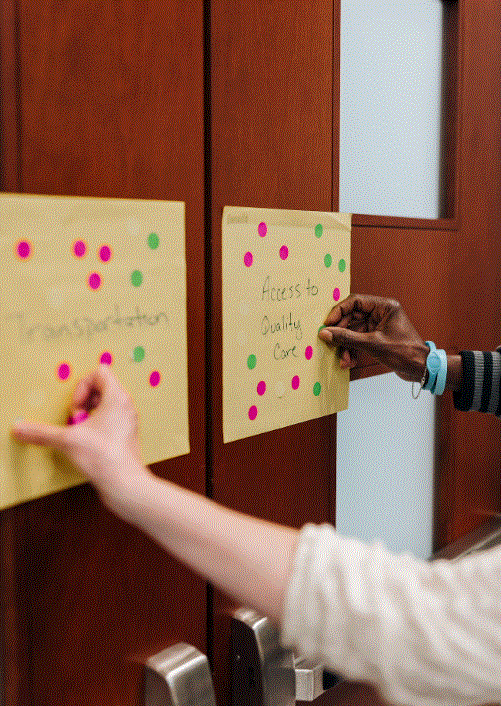To Go Fast and Far, Bring the Appropriate People
I recently had the privilege of facilitating a conversation with a group of community health workers and community paramedics. They are all part of a program that has gained much respect across the Southeast for its innovation and positive impact. I’ve known many of these amazing people for years now, and I have seen firsthand the difference they make in the lives of vulnerable residents and the systems they serve across the community.
At the beginning of the project many years ago, the team anticipated that Medicaid reimbursement and other similar funding strategies would be available by now. And though many state level policy wins have occurred, funding remains an issue. Add in staff turnover, and the project was in a significant transition period. Because of this, the organizational leaders started meeting regularly and talking through challenges and opportunities but had not yet identified a clear path forward.
As I listened to some of the challenges the leadership team discussed, the Collaborative Premise came to mind. I realized why these traditional leaders were stuck - they did not have the “appropriate people” at the table. Those in leadership positions were more removed from the day-to-day than those who were in residents’ houses, seeing the nuances, and hearing the needs of community.
Now if you’ve worked with Liminal Collaboration, you are likely quite familiar with the Collaborative Premise. It was developed by David Chrislip and Carl Larson in their seminal book, Collaborative Leadership. It’s the foundation of the framework we use to support and guide successful collaborations.
“If you bring the appropriate people together in constructive ways with good information, they will create authentic visions and strategies for addressing the shared concerns of the organization and community”.
The community health workers and community paramedics are engaging with their residents every day, those who are struggling with chronic disease, unstable housing, or financial insecurity. They clearly see the issues within the system, the policies that need changed or developed, the experience of the people in the community and the pathways that will provide opportunity, adequate support and dignity. They were missing from the conversation about the future of the project.
The community health workers and community paramedics were asked for their help and guidance. After talking through a few questions together, I put blank flipchart paper on the wall and passed out markers.
Immediately, those who had previously been left out stepped up to the front of the room and began redesigning the project and their own roles, creating an environment where they and residents could succeed. It took only a few minutes before a set of viable solutions came to life. I immediately saw the power of engaging the “appropriate people” in designing their own future and addressing the shared concerns of the community.
Though there may still be a complex road ahead, and long-term funding is still uncertain, bringing together the appropriate people clearly identified some immediate steps that could make a big impact and provided clear direction toward long-term solutions. Not to mention it relieved frustration for most everyone. Moving forward it will take all of the players to put this set of solutions into action. Gathering the appropriate people starts with those impacted most by the issues (context experts), and includes those who know the research and best practices (content experts), those who have the power to allocate resources or create policy, and strong facilitative leadership.
Often, our culture elevates the role of the content expert over the context expert. We are too quick to defer to those who study something versus those who live it. But, we have learned that everyone plays a vital role. There are many powerful questions to ask when your collaboration faces challenges, but the first may be “Does my collaborative include the appropriate people?”


